From the leaves, she pokes her head. As silently as the wind that graces the Oak’s branches and causes the leaves to fall, Windflower makes her appearance.
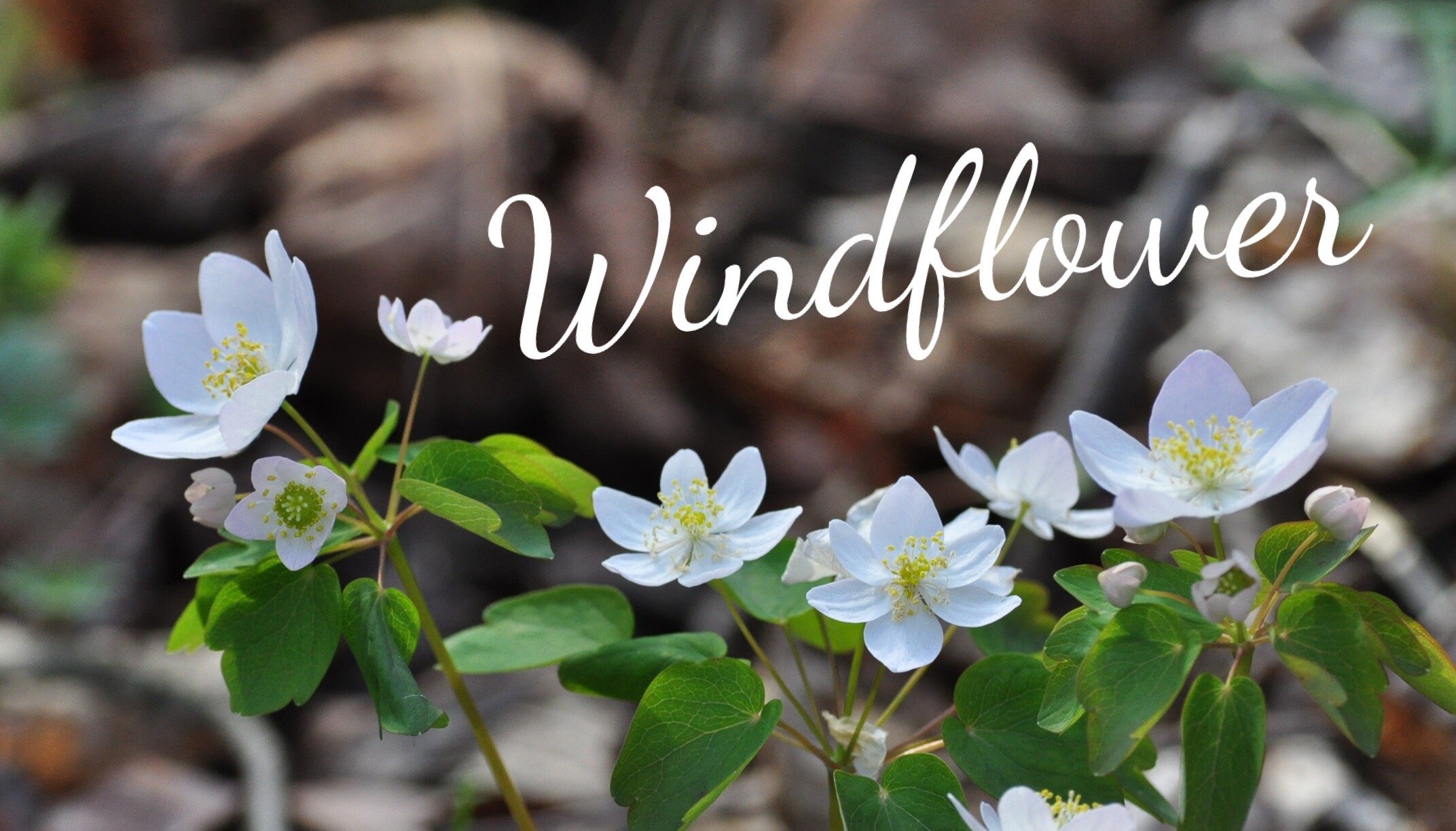
She is flexible and stately. Royal and alluring. She is arrayed in white with a Queen-in-training’s charm.
She is the Windflower
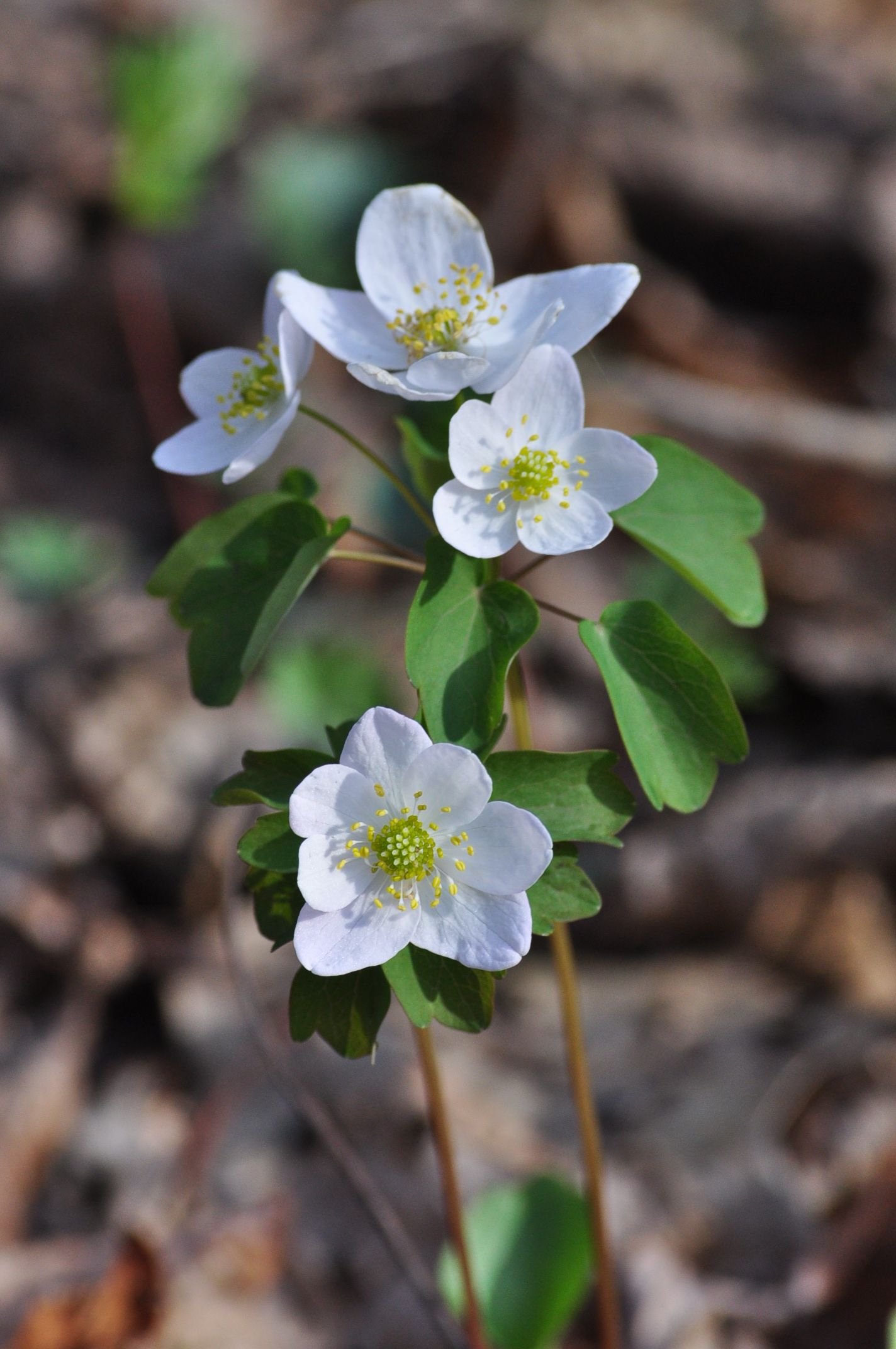
Also known as Rue Anemone or scientifically as Thalictrum thalictroides, Windflower hails from the Buttercup family.
Many may trample her or even pass right by her for she clings close to the ground and her gentle graceful appearance cannot be noted but by the gentlest of human forms.
Being a spring ephemeral, she is here for a short spell and disappears, sending her energy back into the root until the next spring.
But it is underground where the magic happens, where the power is stored and released in such beauty to bring humans to their knees (to look at her of course!). Didn’t I tell you she was a Queen-in-training?
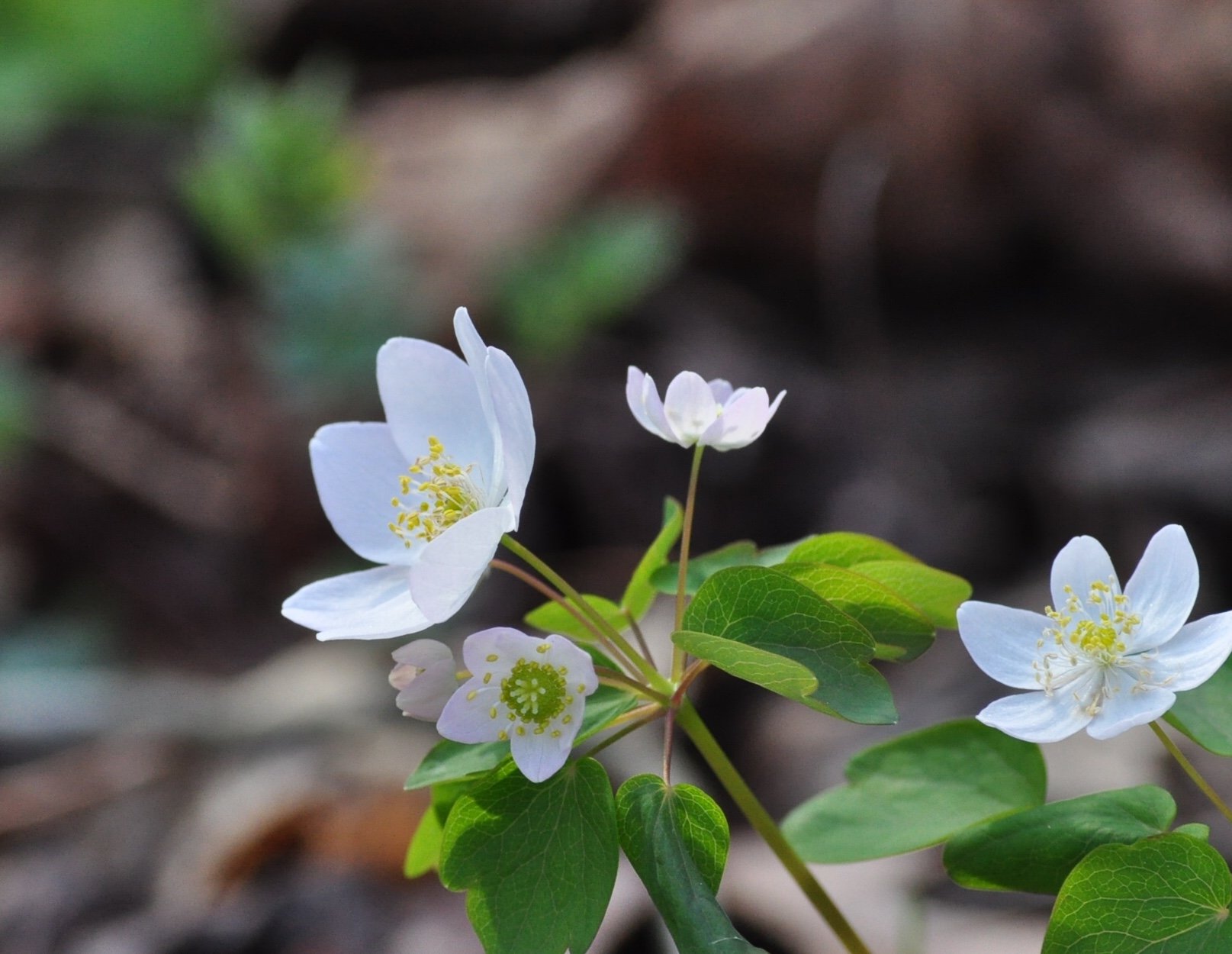
So do not be surprised if this white beauty brings you to your knees and conjures up the feeling of the wind caressing your face as you linger in the Here & Now. What are the ephemerals to us if not the sweet teachers of spring, reminding humans to awaken to the beauty all around us if we only have eyes to see?
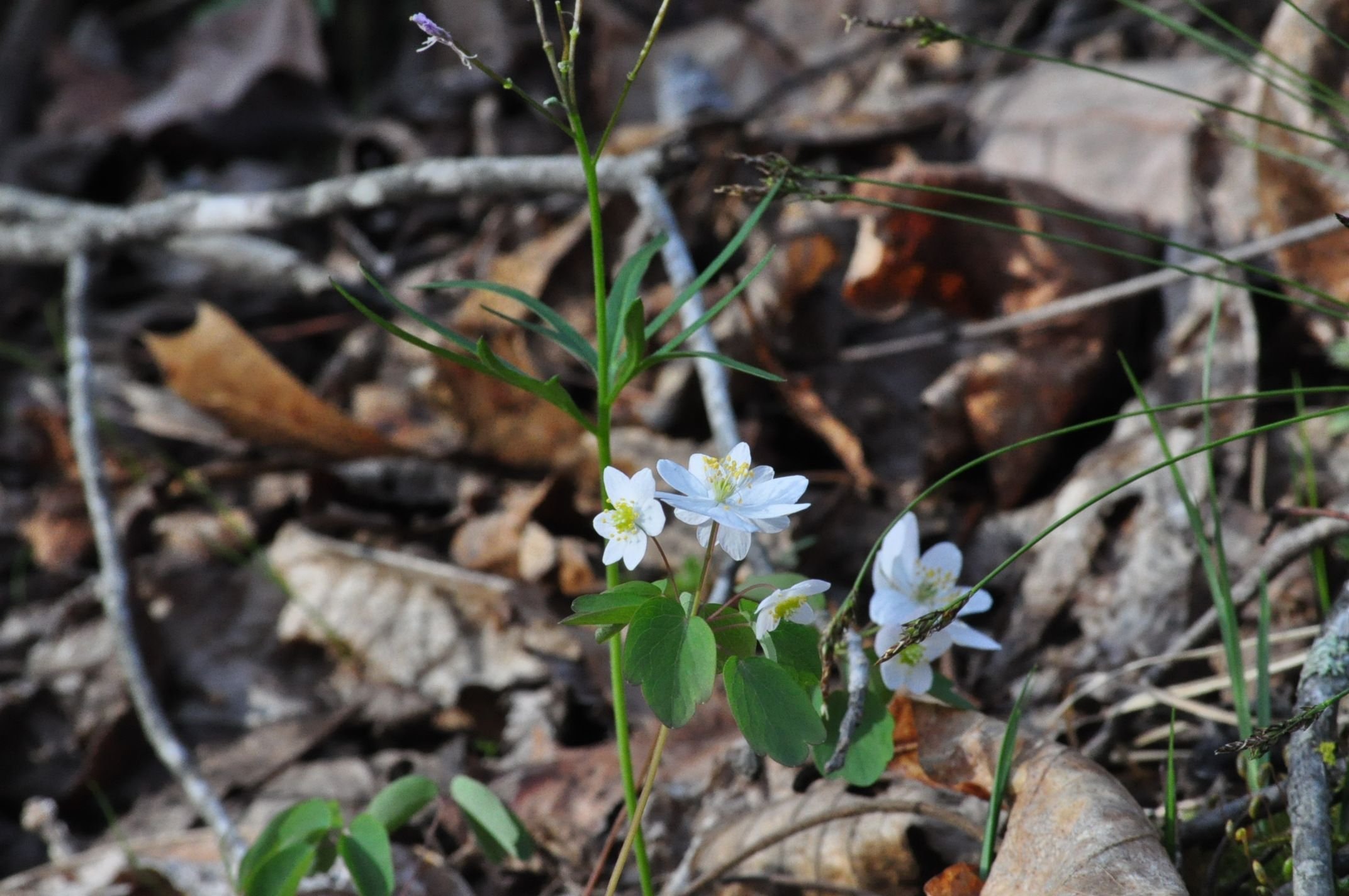
At this point, my journey researching this plant took another turn and here is where I’m very thankful to Steemit/this blogging platform for it encourages me to research new things and to put them into a shareable format = I learn a lot!!
Herbal Energetics
Anxiety Support
Reading about Anemone species, I read that they’re used for panic attacks and anxiety.
Juliette Blankespoor notes that they’re helpful for bringing the center of gravity down during panic attacks. This is small-quantity medicine as they’re very potent, toxic plants. 1-5 DROPS (not dropperfuls) of the medicine will do.
As the energetics, etymology (anemos means wind and mone means habitat/place of), and location/habitat of this plant became clearer, something clicked in my brain.
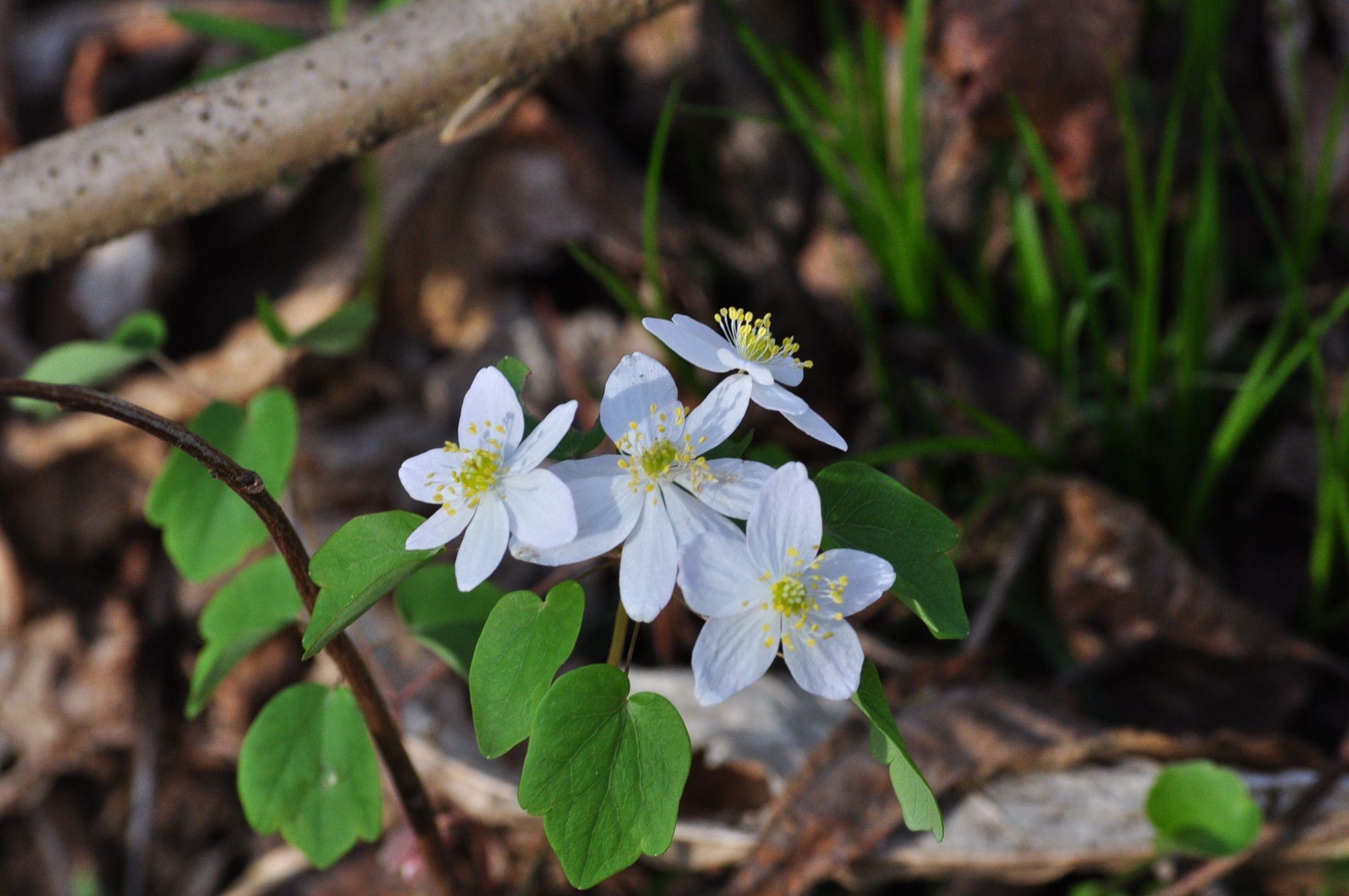
The Windflower, so named because of its thin stalk and windy climes, is a champion of the wind. She keeps her petals in tact and looks stately even in the harshest of winds (this is true; after a windstorm I’ve noticed these plants still retain their regal charm and don’t look the slightest bedraggled).
If we relay this characteristic to her medicinal/energetic action we think about Wind in humans.
Wind can mean anxiety. Think of the tree swaying and shaking its branches in a storm. Anxiety, and especially its more severe form, panic attacks, are a major shaking of the boughs so to say. This rooting and staying calm and even beautifully preserved during these storms is a wonderful medicinal offering of these tiny stately beauties.
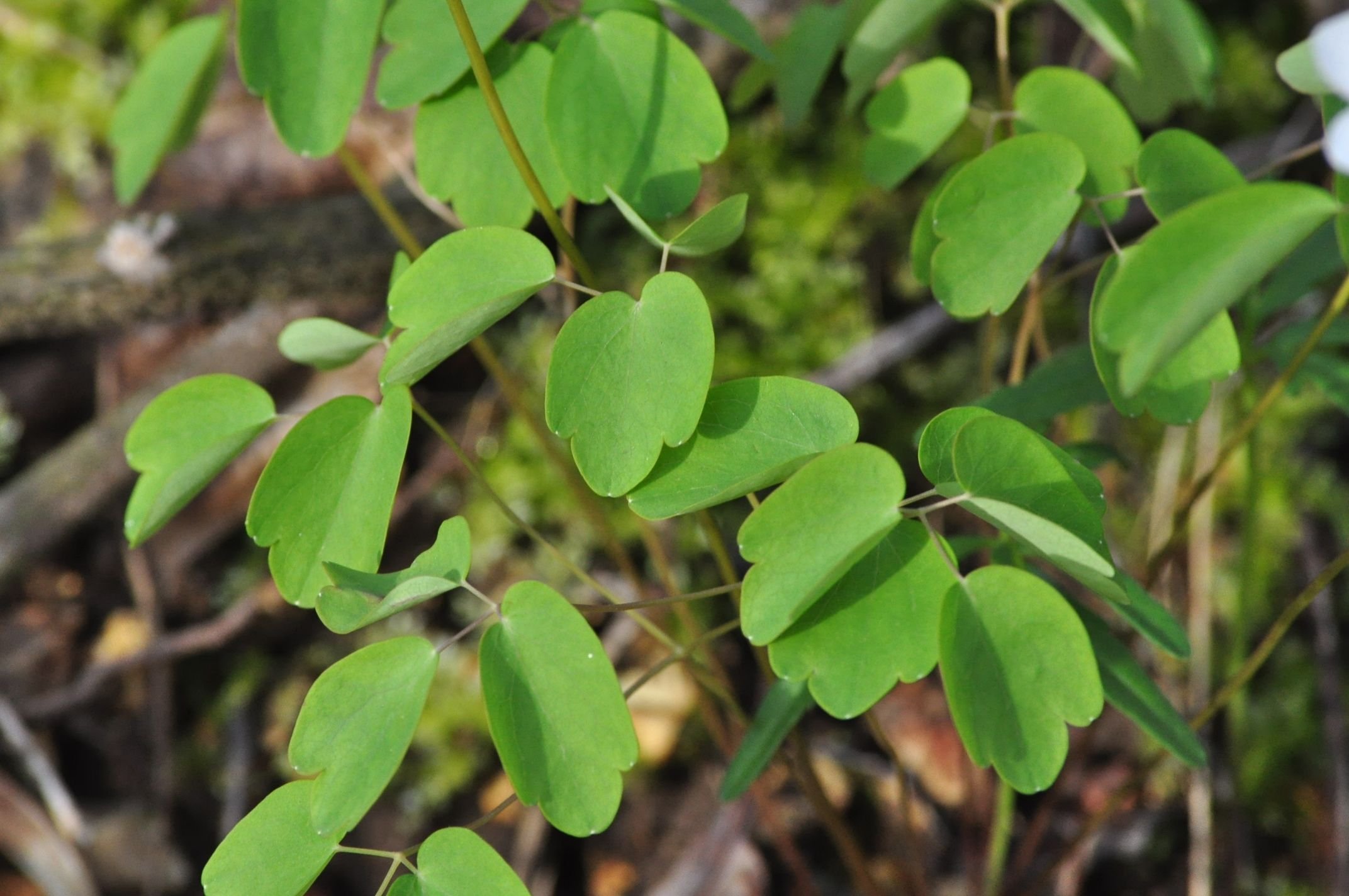
It made me think of our natural inclinations toward balance. In a windy environment, we learn how to root. We need that skill to survive. Perhaps if we’re too rooted, we feel the need to fly and like all things in life, seek balance.
When getting to know Plant medicines, I now have another life experience backing up my repertoire: plants are in relation to their environment seeking that shifting edge of balance in an ever-changing environment and, like us, it is this response to the environment that helps us develop the strengths and skills which characterize our formation.
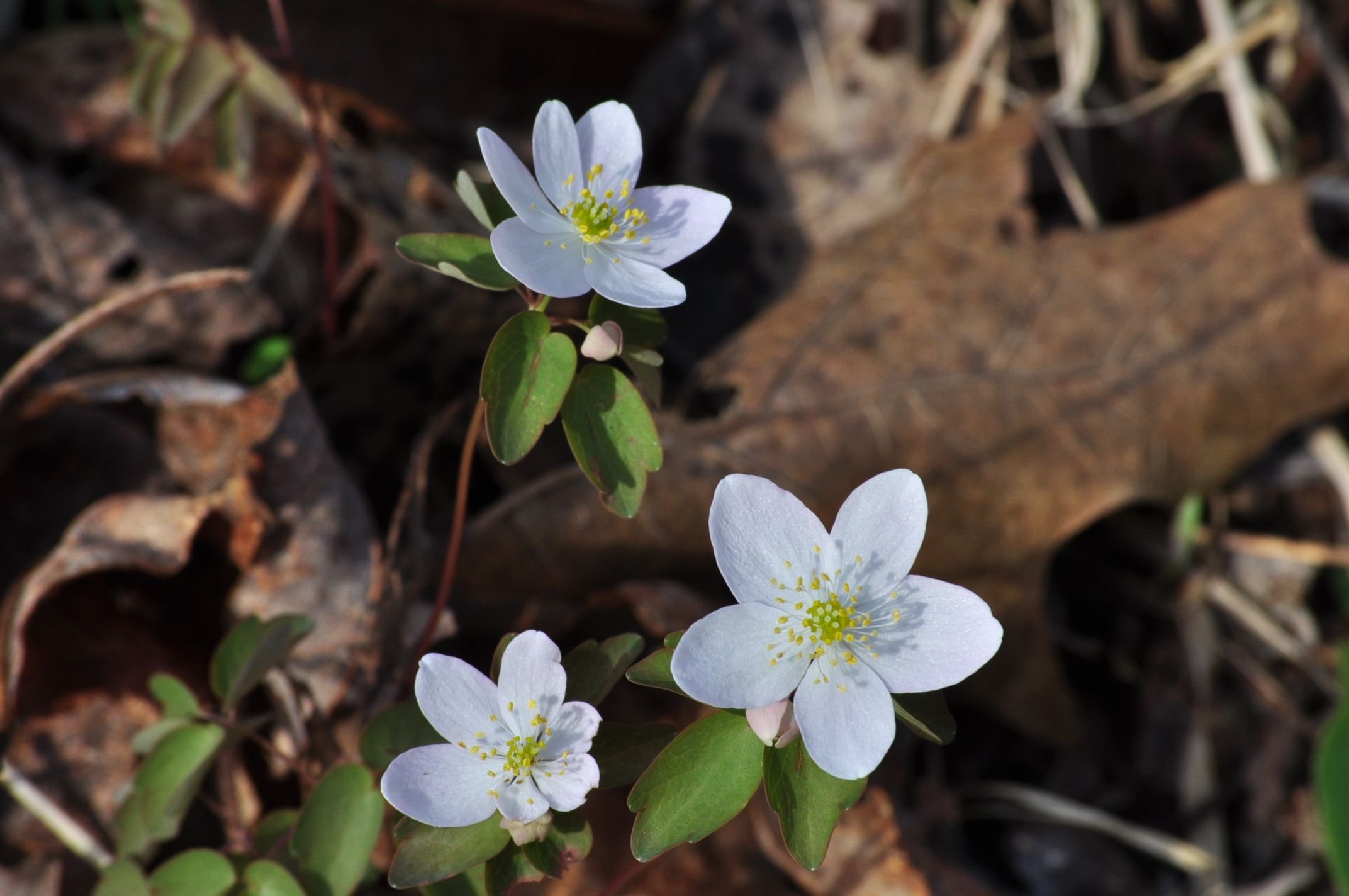
Would the Anemone need to be as potent, grounding, even toxic a medicine if she was in a gentler clime? I don’t know, ask red clover, a nourished/nourishing, gentle-as-tonic field crop if its clime has influenced it.
Now you should know that Rue Anemone, this Windflower, isn’t s true Anemone. Can this medicine be used in this same way?
I’m going to test it and find out. Word to the wise: this plant is toxic and it is said that eating 20 plants could kill you! Please read Juliet’s Article before attempting to make your own tincture/flower essence!!
Making the Tincture
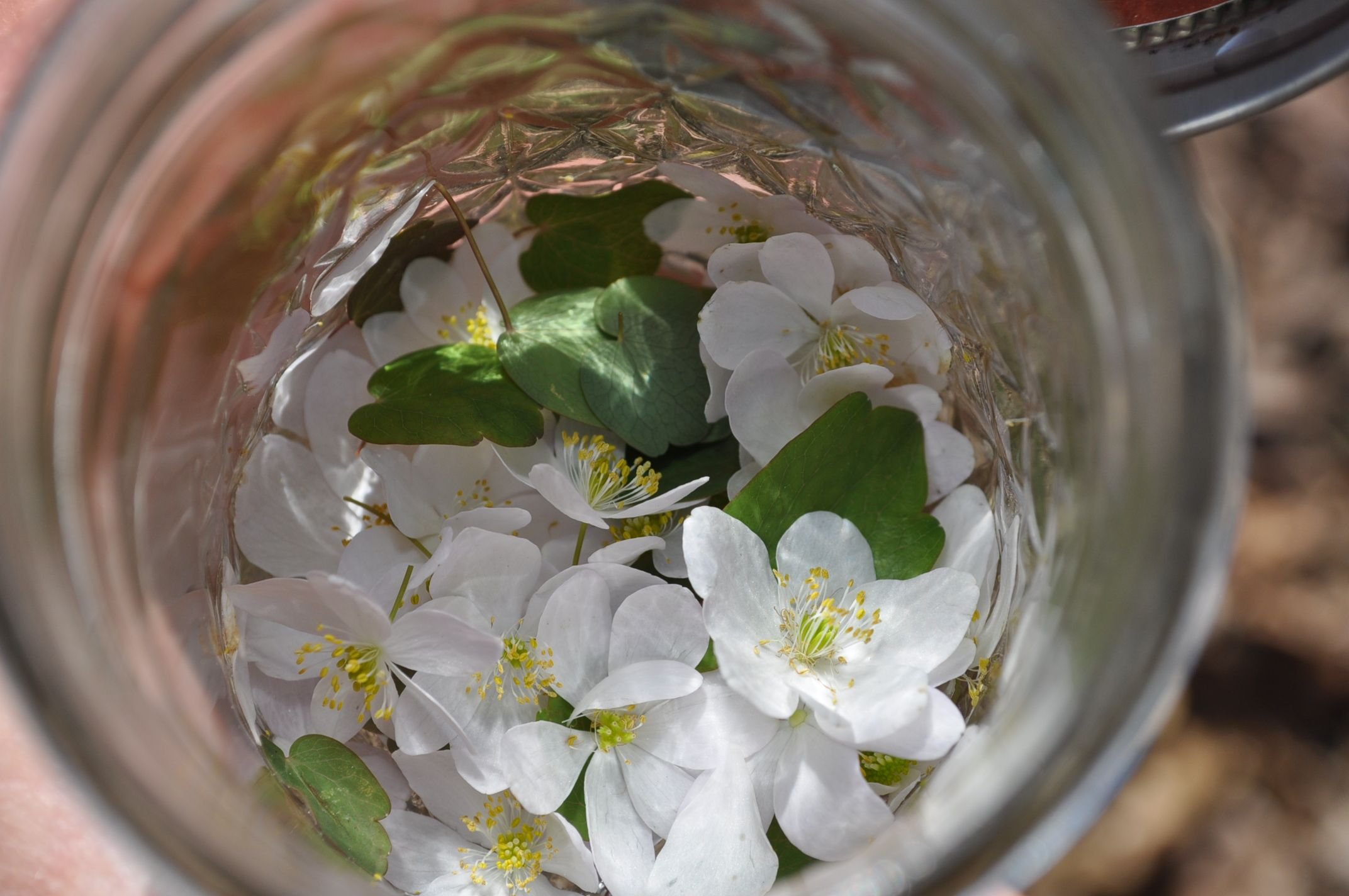
Take a small jar. Remember 1-5 drops of this medicine goes a far way! And fill half of it with flowers and leaves (don’t use the root).
While picking, take 1 flower and 1 leaf from each plant. Connect with the plant first, as always, and ask for permission.
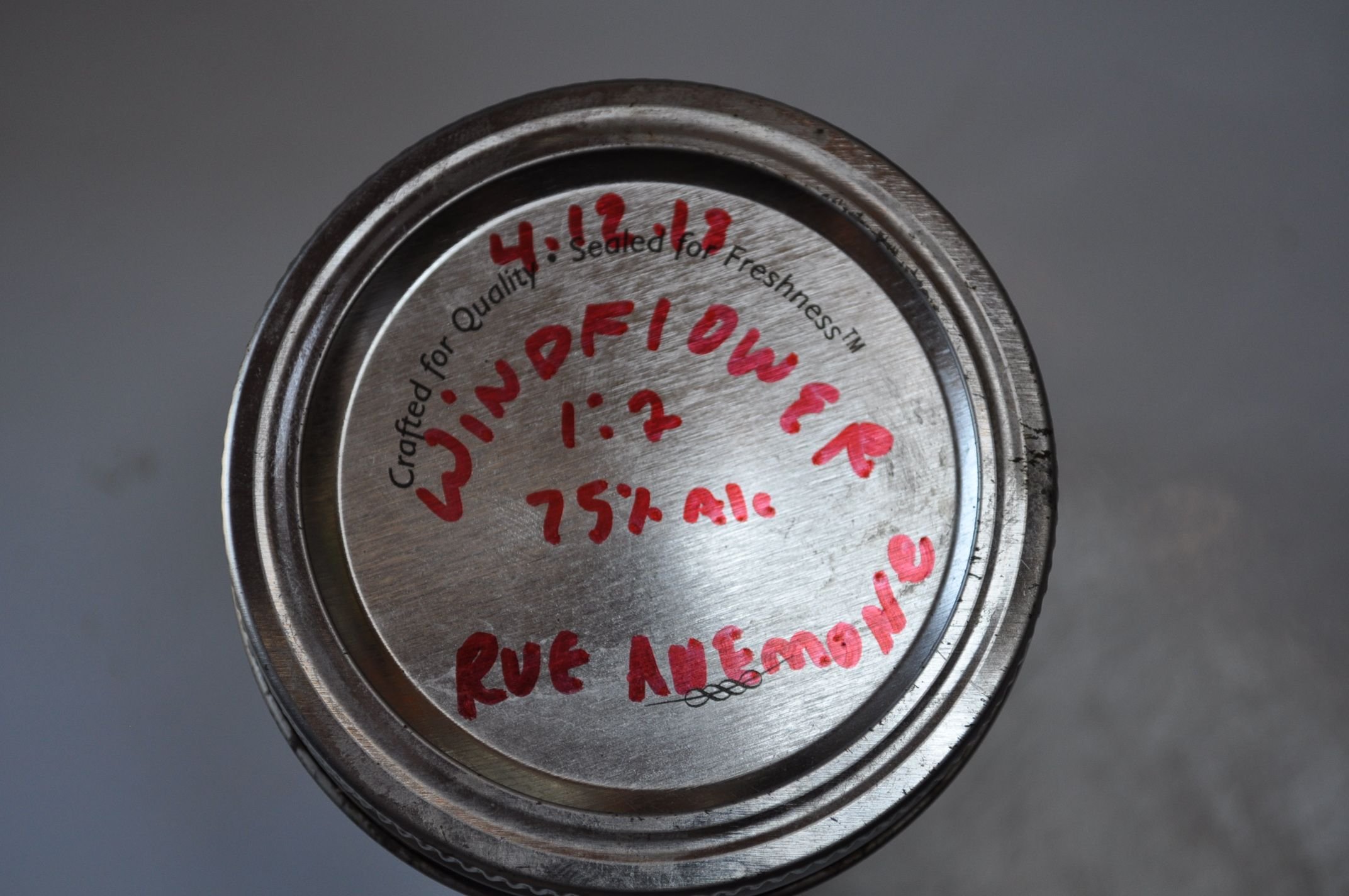
Cover with 75-95 proof alcohol and let steep for 2 moon cycles in dark cool place. Strain and store in dark glass bottles.
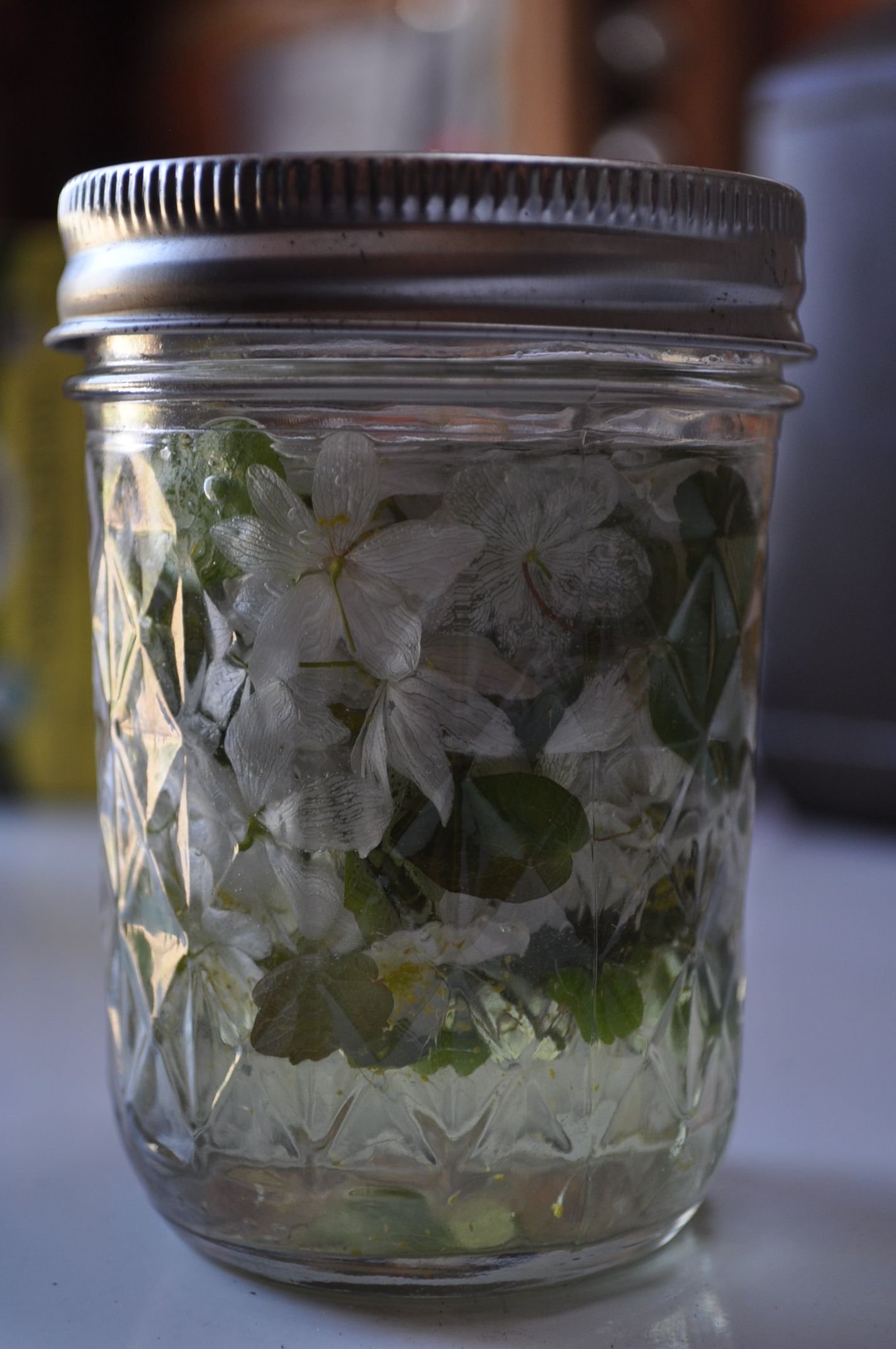
Be careful with this medicine and only take in small doses. It is potent and you only need a little to do the trick. As Juliet relays when she took too much:
In my experience, overdose usually involves nausea and altered sensory function (i.e. feeling woozy and just plain weird). During an extra challenging romantic moment in my very distant past I called upon anemone to help me stay grounded and in my heart. I was taking 5 drops of the tincture frequently and reached my personal threshold with some powerful visual disturbances. In case any of you think this sounds like fun, think again, anemone is not the kind of plant to play nicely.
Thanks for reading. Which herbal allies do you use for anxiety/calming yourself? Which practices do you employ?

This post was written by a member of the #ecotrain. Check the tag often for more enlivening posts!


